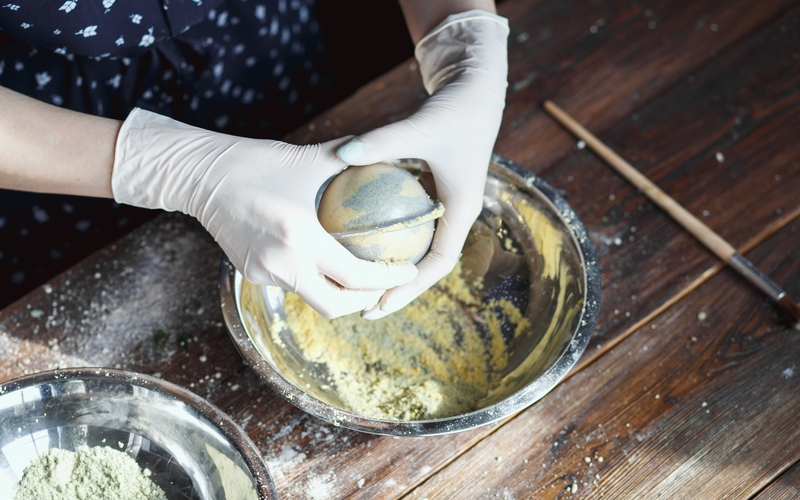The Comprehensive Guide to Curtain Cleaning Success
Posted on 28/06/2025
The Comprehensive Guide to Curtain Cleaning Success
Are your window dressings looking a little dull? Discover how to breathe new life into your drapes with our expertly crafted, comprehensive guide to curtain cleaning success. Whether your goal is to eradicate allergens, freshen up faded fabrics, or simply maintain a sparkling home, this guide covers everything you need to know about effective curtain cleaning methods, tips, and tricks!
Why Clean Curtains Matter: Health, Hygiene, and Home Appeal
While many homeowners focus on cleaning floors and furniture, curtain cleaning is often overlooked. Curtains not only enhance a room aesthetically, but they also act as filters, trapping dust, allergens, pet dander, and odors. Over time, dirty drapes can impact indoor air quality and detract from the beauty of your space. Regular curtain maintenance ensures a fresher, healthier home for everyone.
- Removal of allergens: Clean curtains reduce dust mites, pollen, and other allergens.
- Longevity: Regular cleaning extends the life of your drapes.
- Enhanced appearance: Pristine curtains revitalize room decor.
- Odor control: Washing or airing removes trapped odors, leaving rooms smelling fresh.

Understanding Curtain Fabrics and Their Cleaning Needs
Every curtain is unique in fabric and construction, which determines the best cleaning approach. Here's a breakdown of common curtain fabric types and their recommended maintenance:
- Cotton & Linen: These natural fibers are generally durable and easy to clean, though they may shrink if not washed correctly.
- Polyester: Stain-resistant and machine-washable, this synthetic material requires less delicate handling.
- Velvet: Luxurious but delicate, velvet curtains need gentle care--usually dry cleaning is safest.
- Silk: Exquisite but very fragile, silk curtains often demand professional care only.
- Sheer & Lace: Lightweight and detailed, these require washing in cold water and with special laundry bags.
Tip: Always check your curtain's care label before proceeding. When in doubt, seek professional curtain cleaning services to protect delicate fabrics.
How Often Should You Clean Curtains?
Cleaning frequency depends on many factors--room use, air quality, presence of pets or smokers, and the fabric itself. As a general guideline for ultimate curtain maintenance:
- Light dusting or vacuuming: Every 2-4 weeks
- Deep cleaning or washing: Every 6-12 months
If allergies are a concern or if your home is in a high-traffic or smoky area, consider more frequent curtain cleaning sessions for best results.
Preparing Curtains for Successful Cleaning
Follow these steps to maximize your curtain cleaning results:
- Read Manufacturer's Instructions: The care label is your best friend--respect it to avoid damage.
- Remove Hardware: Take down all hooks, rings, and other fittings for thorough cleaning.
- Shake Off Dust: Gently shake curtains outdoors to eliminate loose debris before washing.
- Test for Colorfastness: Spot-test a hidden area with water and mild detergent.
Methods for Curtain Cleaning Success
1. How to Clean Curtains with a Vacuum
Vacuuming is the easiest way to maintain curtains, especially for heavy or delicate drapes that cannot be washed frequently.
- Use the soft brush attachment.
- Start from the top and work downward in smooth strokes.
- Pay attention to folds and hems where dust collects.
- Vacuum both the fabric's front and back for thorough results.
This method is great for in-between deep cleans and helps prevent allergen buildup.
2. Machine Washing Curtains
Some drapes--especially polyester and cotton curtains--are machine washable. Follow these steps for a successful wash:
- Detach all hooks, rings, and hardware.
- Unfold and shake curtains thoroughly.
- Use cold water and a gentle cycle.
- Mild detergent is recommended to protect the fibers.
- Wash similar colors together.
Once finished:
- Hang curtains while damp to reduce wrinkles.
- If needed, steam or iron lightly on the reverse side.
Never overload the machine--large panels may need to be washed separately for even cleaning.
3. Hand Washing Delicate Curtains
For delicate fabrics like sheer, lace, or lightweight cotton/linen, hand washing is gentle and effective:
- Fill a basin with cold or lukewarm water.
- Add a small amount of mild detergent.
- Submerge curtains and gently swirl; avoid wringing or rubbing harshly.
- Rinse well and press water out gently--never twist.
- Lay flat on a towel or hang to air-dry.
Tip: Use laundry bags for extra protection of delicate drapes.
4. Steam Cleaning Curtains
Steam cleaning is suitable for treating wrinkles and sanitizing heavy drapes:
- Leave curtains hanging.
- Run a handheld garment steamer or professional steam machine from top to bottom.
- Work in sections and avoid lingering too long in one spot.
- Let curtains air dry fully before closing windows or blinds.
Steam cleaning minimizes shrinkage risk and removes bacteria without chemicals.
5. Professional Curtain Cleaning Services
For valuable, lined, massive, or specialty drapes like velvet and silk, or if you want guaranteed results, professional services are your safest bet. Curtain cleaners use specialized tools and solvents to achieve deep cleaning and spot removal without damaging fabrics. Many even offer on-site cleaning so you don't have to take down or rehang your drapes.
Spot Cleaning & Stain Removal Tips
Spills and stains are inevitable. Use these key steps as your curtain stain removal guide:
- Act swiftly: Dab (don't rub) the stain with a clean, absorbent cloth.
- Create a solution: Mix a small amount of gentle detergent with cold water.
- Test on a hidden area to ensure colorfastness.
- Apply gently: Use a sponge or brush with soft bristles for work on spots.
- Blot and rinse: Remove remnants with a damp cloth and allow to air dry.
For deep or persistent stains, consult a professional cleaner to prevent damage.
Drying Your Curtains Correctly
Avoid tumble dryers for most curtains, as heat can shrink or damage fabric. Instead:
- Hang curtains immediately after washing to their original position (while damp) for natural crease release.
- If necessary, reshape pleats or folds while wet for neatness.
- Allow to air dry with good ventilation.
For stubborn wrinkles, use a cool iron or garment steamer on the reverse side once dry.
Preventing Future Dirt & Dust Buildup
Keeping clean curtains cleaner for longer is easier than you think! Try these practical prevention strategies:
- Vacuum regularly with a soft brush attachment.
- Keep windows and doors shut on windy, dusty days.
- Install air purifiers or use extractor fans for kitchens and bathrooms.
- Wash hands before touching or opening drapes, especially light-colored ones.
- Encourage a shoe-free home to minimize tracked-in dirt and dust.
Special Considerations: Blackout, Thermal, and Lined Curtains
Specialty curtains often have layers or linings that require extra care. Always consult manufacturer recommendations. Many blackout and thermal curtains are only suitable for spot cleaning or gentle vacuuming. Some lined drapes can tolerate washing if separated from their lining, but others require specialized professional cleaning for best preservation.
How to Clean Heavily Soiled or Aged Curtains
Dirty, stained, or yellowed curtains present a bigger challenge:
- Pre-soak washable fabrics in mild detergent and cool water for 30-60 minutes.
- Add a tablespoon of vinegar or baking soda to help eliminate odors and brighten whites.
- Avoid bleach, which weakens fibers and fades colors.
- For musty odors, hang drapes outdoors in sunlight (if safe for the material).
Stubborn stains or ingrained dirt? Seek out experienced curtain cleaners who can apply industrial-grade stain removers without harming the fabric.
Frequently Asked Questions About Curtain Cleaning
- Can I iron all curtain types?
No. Some fabrics (especially synthetics, silks, and certain linings) are sensitive to heat. Always iron on the lowest heat setting, use a pressing cloth, or stick with steaming if unsure. - Will washing shrink my curtains?
Washing can cause shrinkage, especially for cotton and linen. To reduce risk, wash in cold water, use gentle cycles, and avoid dryers. - What about dry clean only curtains?
These require professional treatment. Attempting to machine or hand wash can result in irreparable damage. - How do I keep curtains fresh between washes?
Quick fixes include regular vacuuming, airing in sunlight, and using fabric freshening sprays made for upholstery.

Eco-Friendly Curtain Cleaning Tips
Seeking green solutions? Try these eco-conscious practices:
- Opt for natural, biodegradable detergents.
- Use vinegar or baking soda for odors and light stains.
- Air dry curtains instead of machine drying whenever possible.
Eco curtain cleaning reduces your carbon footprint and is gentle on fabrics and skin.
Final Thoughts: Achieving Curtain Cleaning Success
In summary: Clean curtains are essential for a fresh, beautiful, and healthy home. Make routine dusting or vacuuming part of your schedule, and deep clean at least once a year. Always follow care labels and recognize when to trust the pros. With this comprehensive guide to curtain cleaning success, you now have the know-how to transform drab drapes into dazzling window dressings!
Ready to give your curtains new life? Follow the tips above and become a certified curtain-cleaning expert!
Related Resources
- How to Wash Curtains - Good Housekeeping
- Curtain Cleaning Tips - Real Simple
- HGTV: Cleaning Drapes Made Easy
Keep this curtain cleaning guide handy for stress-free, sparkling results every time!



